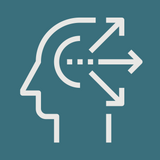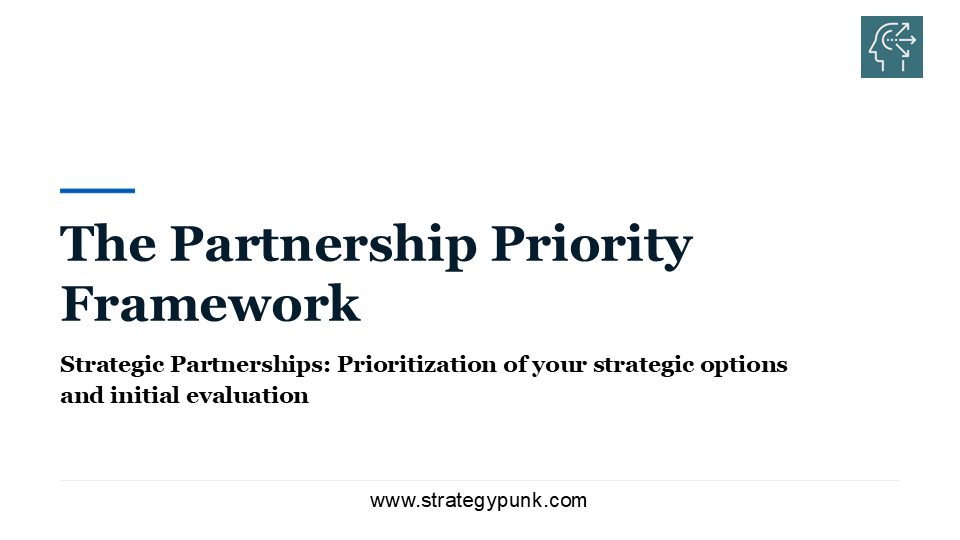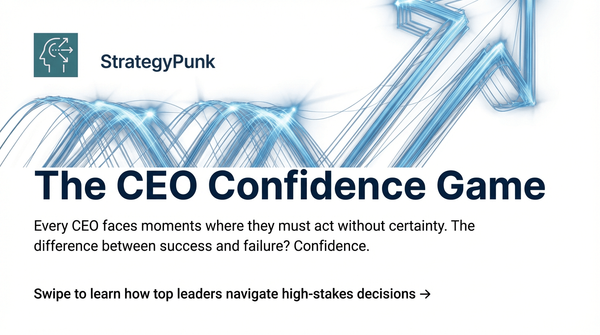The Business Model Blueprint: From Triangle to Table (Free PPT)
Transform vague business model triangles into systematic frameworks with actionable worksheets. Free template included. Build validated business models.

The business model triangle has been around for years.
You know the one - customer in the center, value proposition at the top, revenue model on the left, value chain at the bottom.
Simple. Visual. And completely inadequate for actually building a business.
Don't get me wrong. The triangle works great for presentations. But try using it to develop a real business model and you'll quickly hit a wall. The guidance is too vague. The structure is too loose. The execution path is non-existent.
That's why I created the Business Model Blueprint - a systematic framework that transforms that pretty triangle into something you can actually use.
Why the Triangle Falls Short
The original triangle asks the right questions but provides no roadmap for finding answers. "Who are your customers?" Great question. Now what? How do you segment them? What about their pain points? Their buying journey? Their lifetime value?
The triangle leaves you hanging.
Even worse, it doesn't show you how the pieces connect. Change your pricing strategy and suddenly your value proposition needs adjustment. Shift your target customer and your entire value chain might need rebuilding. The triangle treats each component as isolated when they're actually interdependent.
The Blueprint Approach
The Business Model Blueprint keeps the four core components but adds structure, guidance, and implementation tools. Instead of vague prompts, you get detailed worksheets. Instead of isolated thinking, you get systematic analysis.
Here's how it works:
Component 1: Customer Foundation
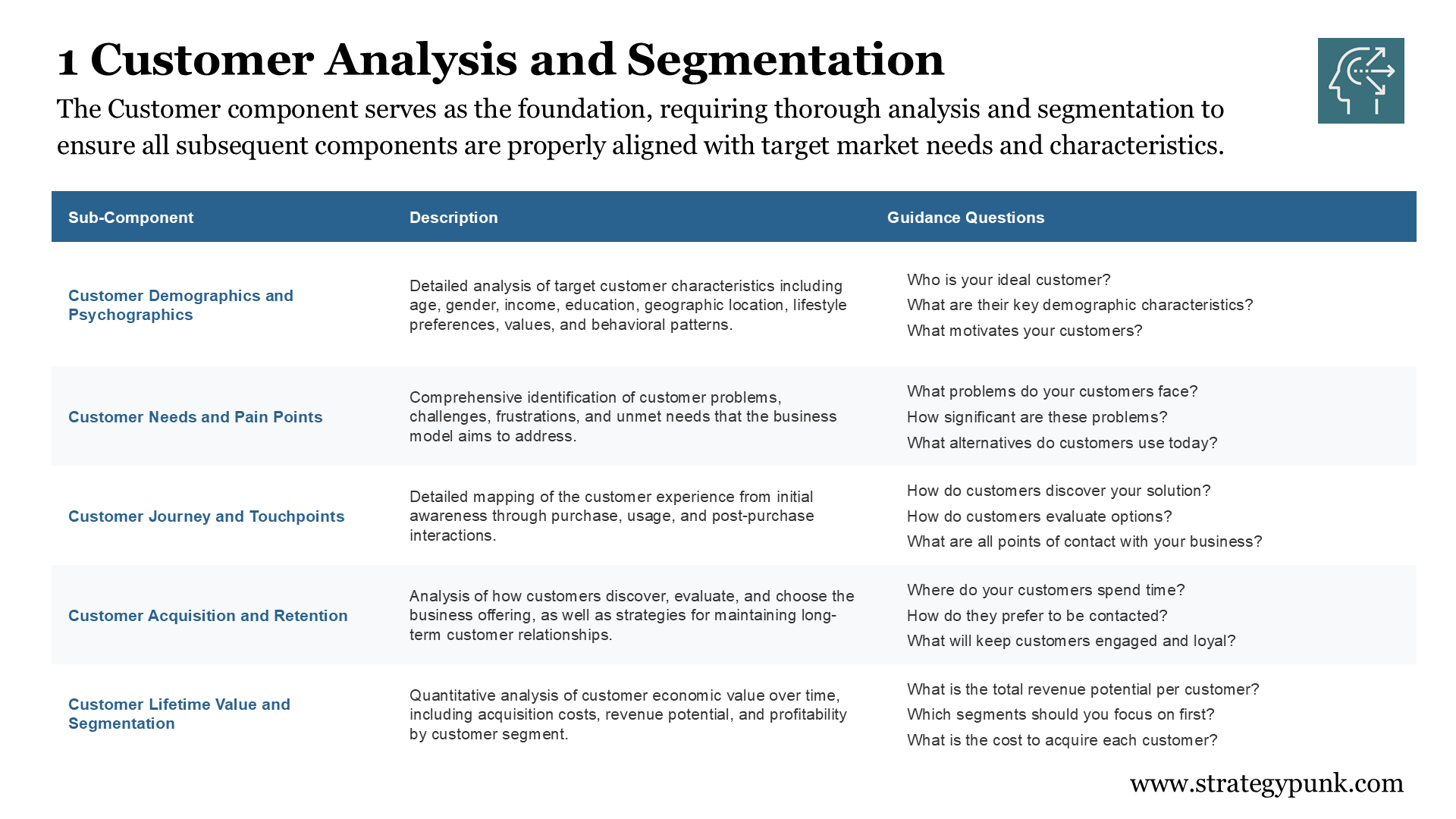
This isn't just "who are your customers?" This is deep customer analysis across five dimensions:
- Demographics and psychographics
- Needs and pain points
- Customer journey mapping
- Acquisition and retention strategies
- Lifetime value calculations
Each dimension has specific guidance questions and assessment criteria. You'll know when you're done because you'll have quantified, validated customer insights.
Component 2: Value Proposition Design
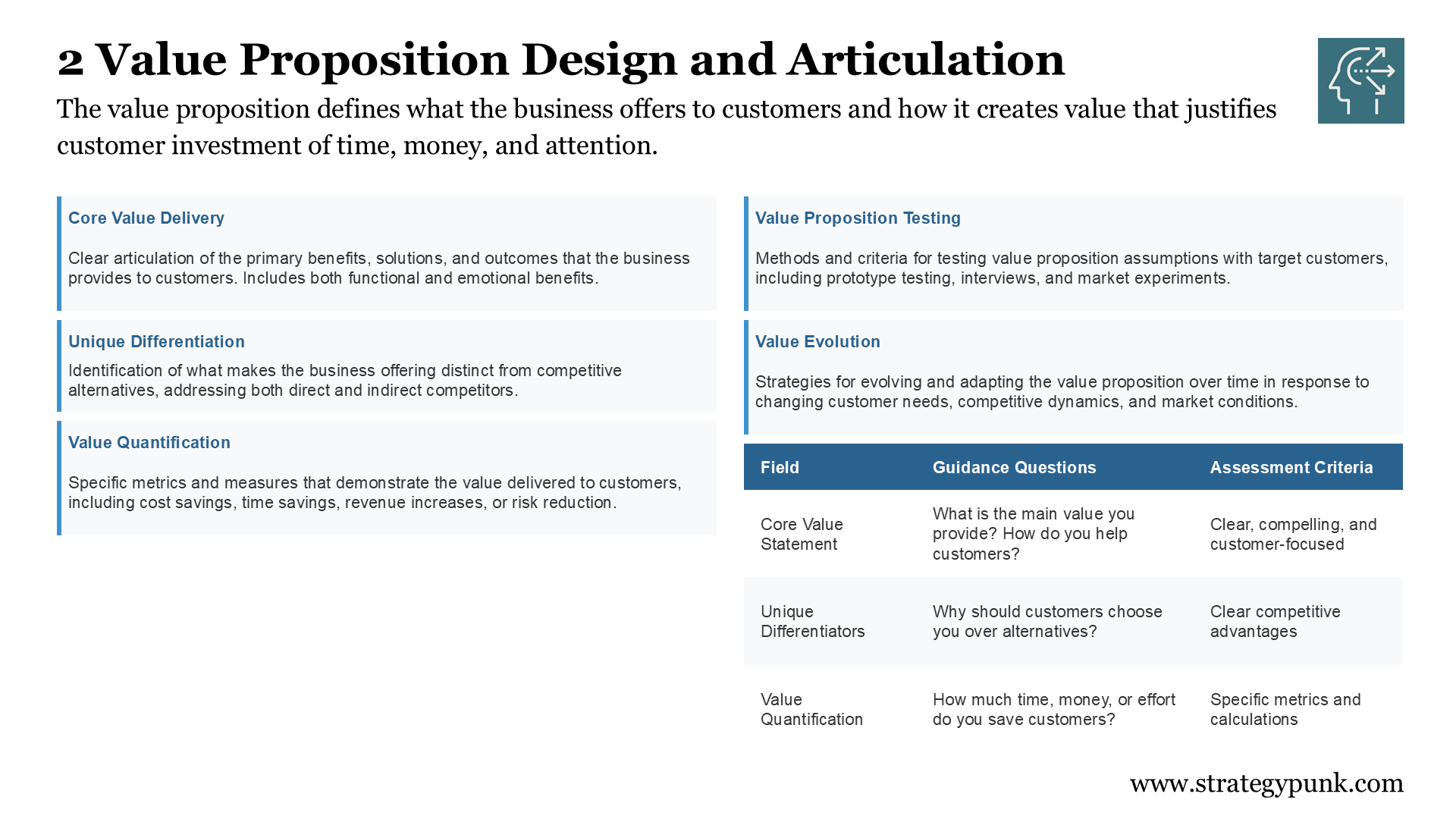
Value propositions aren't just marketing copy. They're strategic assets that need systematic development:
- Core value delivery (functional and emotional benefits)
- Unique differentiation analysis
- Value quantification with specific metrics
- Testing and validation methods
- Evolution strategies for changing markets
The framework forces you to prove your value claims with data, not just assert them.
Component 3: Value Chain Excellence
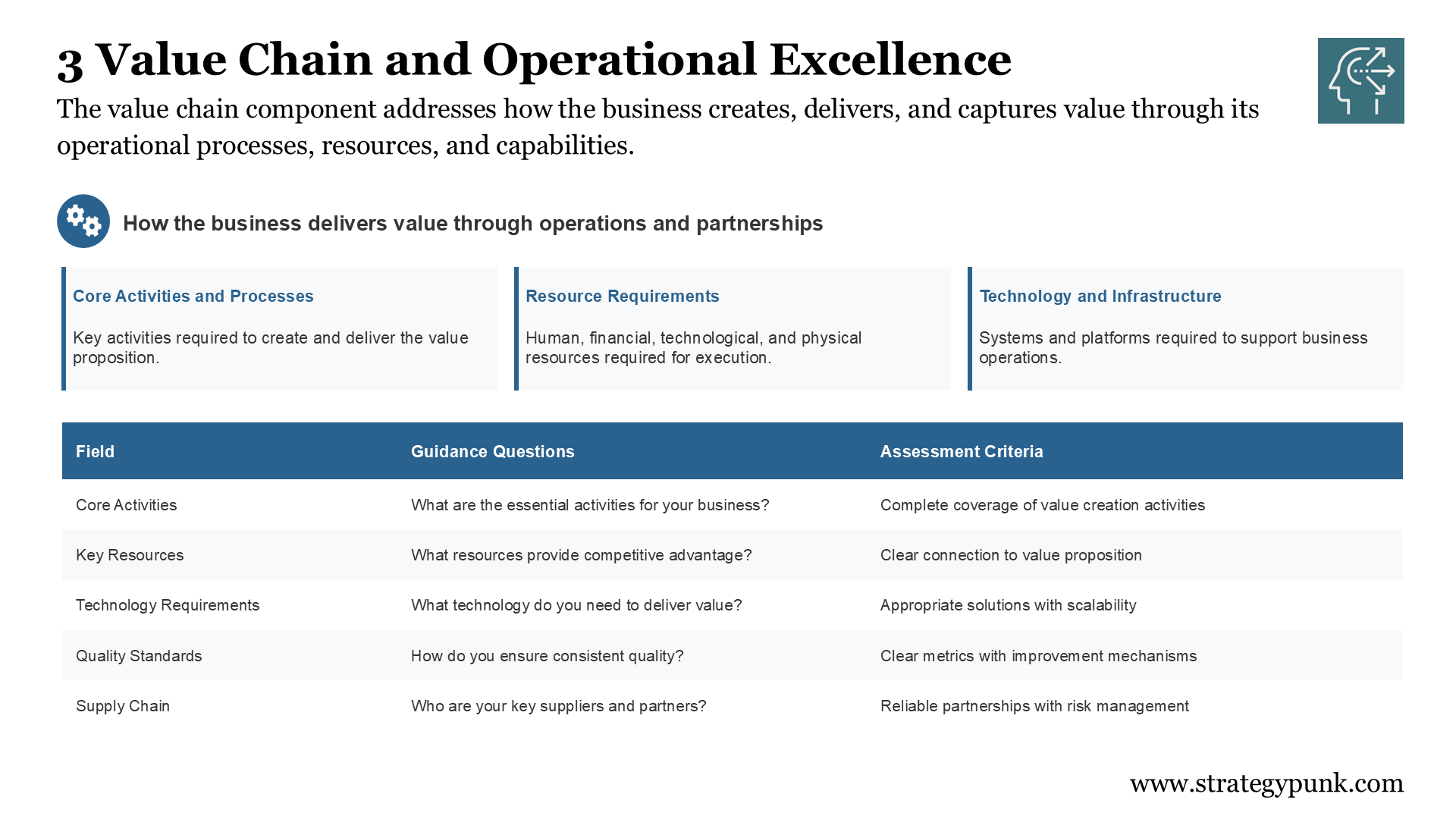
Operations aren't an afterthought. They're where value gets created or destroyed:
- Core activities and processes
- Resource requirements and capabilities
- Technology and infrastructure needs
- Quality standards and performance metrics
- Supply chain and partnership management
This section connects your value proposition to actual delivery capabilities.
Component 4: Revenue Model Architecture
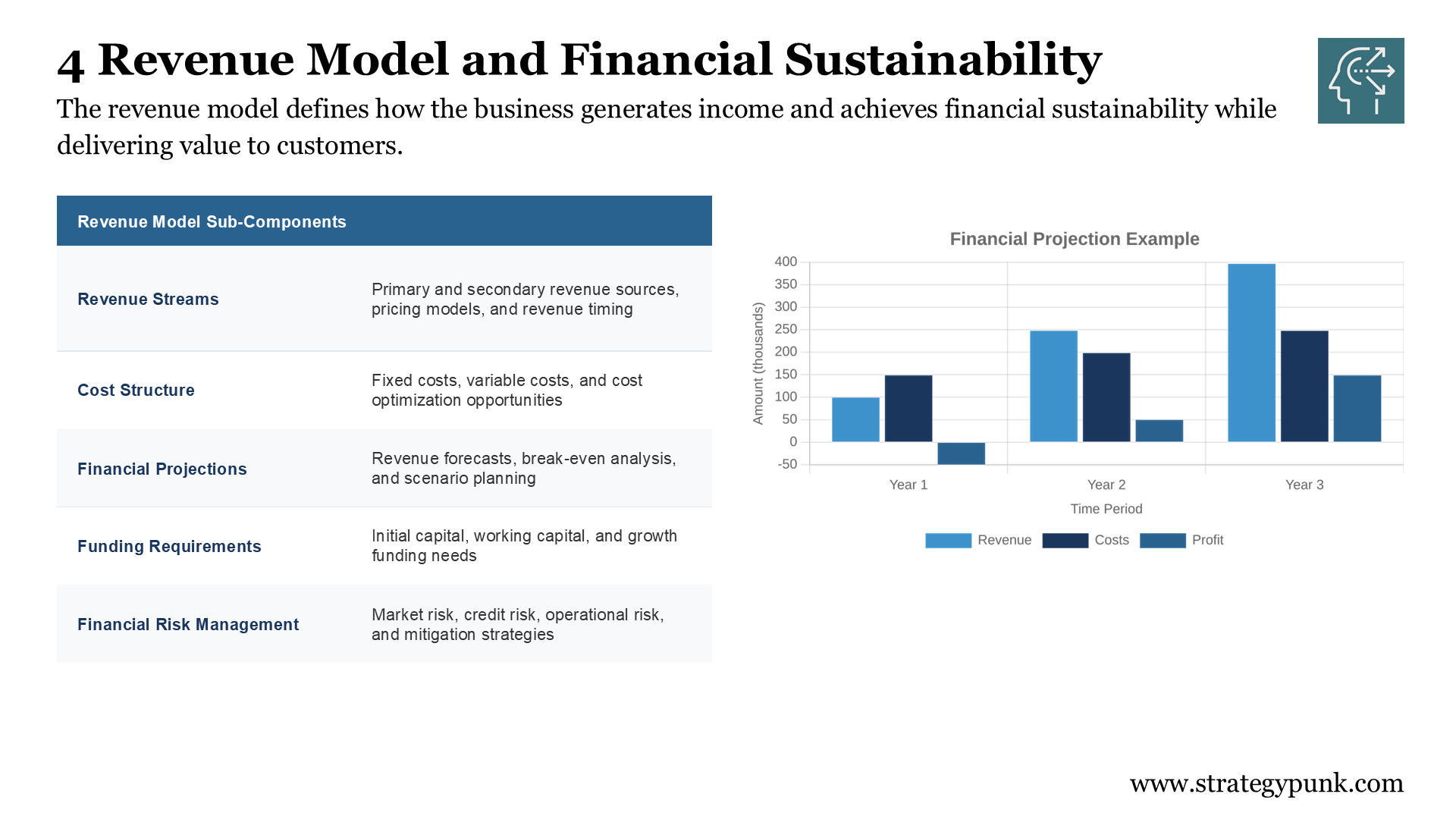
Revenue models need to be sustainable, scalable, and aligned with customer value:
- Revenue streams and pricing strategies
- Cost structure and margin analysis
- Financial projections and scenario planning
- Funding requirements and capital strategy
- Risk management frameworks
The framework ensures your revenue model supports your entire business model, not just generates cash.
From Framework to Implementation
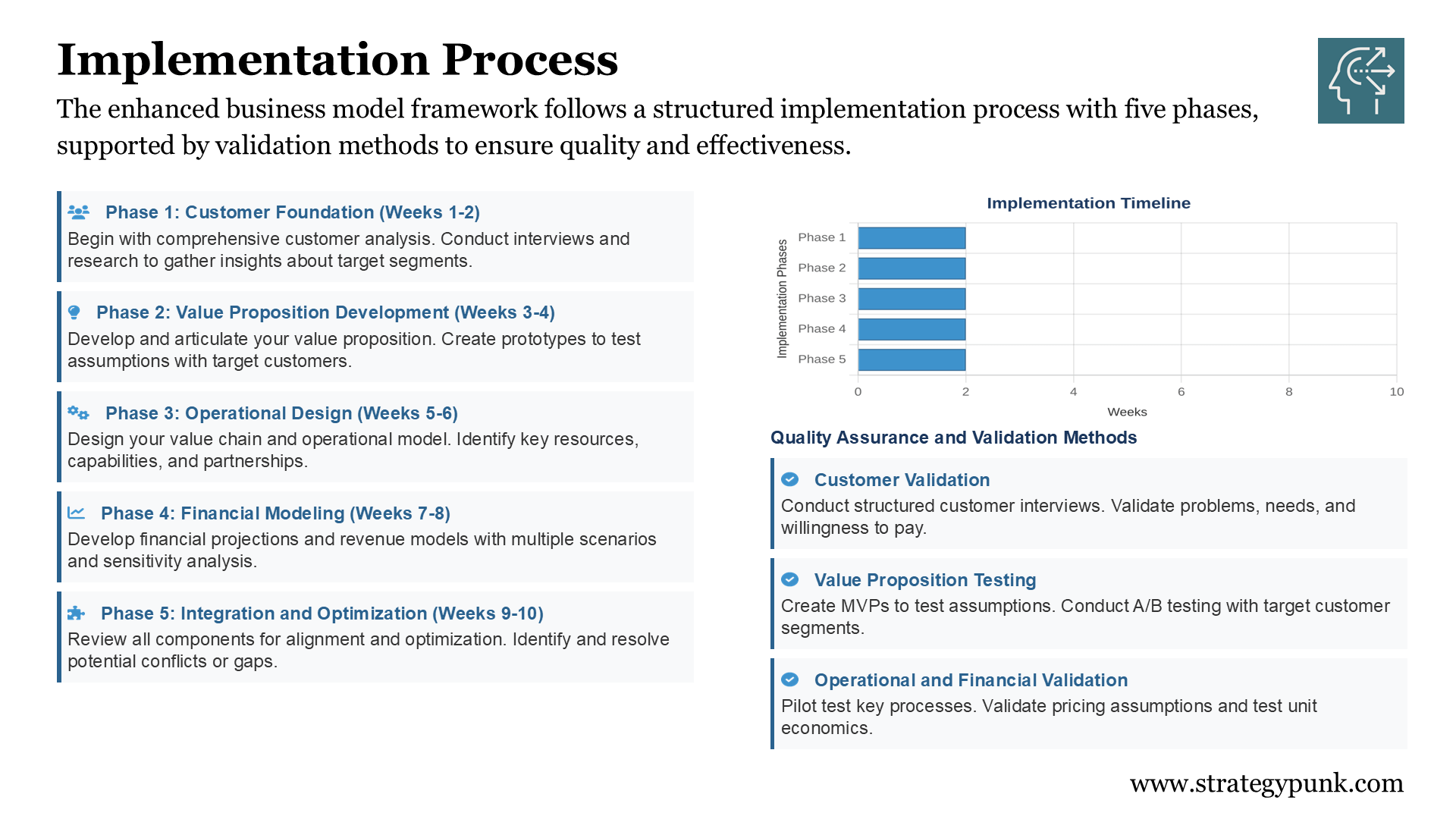
The real power comes from the implementation process.
Five phases, ten weeks, systematic validation:
Phase 1-2 (Weeks 1-4): Customer foundation and value proposition development. Start with customer research. Build and test your value proposition. Get validation before moving forward.
Phase 3-4 (Weeks 5-8): Operational design and financial modeling. Design your delivery capabilities. Build comprehensive financial models. Validate assumptions with pilots.
Phase 5 (Weeks 9-10): Integration and optimization. Ensure all components align. Identify and fix gaps. Create your final business model documentation.
Each phase includes specific deliverables and validation checkpoints. You can't move forward until you've validated your assumptions with real data.
What Makes This Different
Three things set the Blueprint apart from other business model frameworks:
Systematic Structure: Every component breaks down into specific sub-components with clear guidance. No more wondering what to do next.
Validation Requirements: You can't just fill in blanks. Every assumption needs validation with customer data, financial analysis, or operational testing.
Implementation Focus: This isn't theoretical. It's designed to create actual business plans, not just pretty diagrams.
Real-World Application - SaaS Company
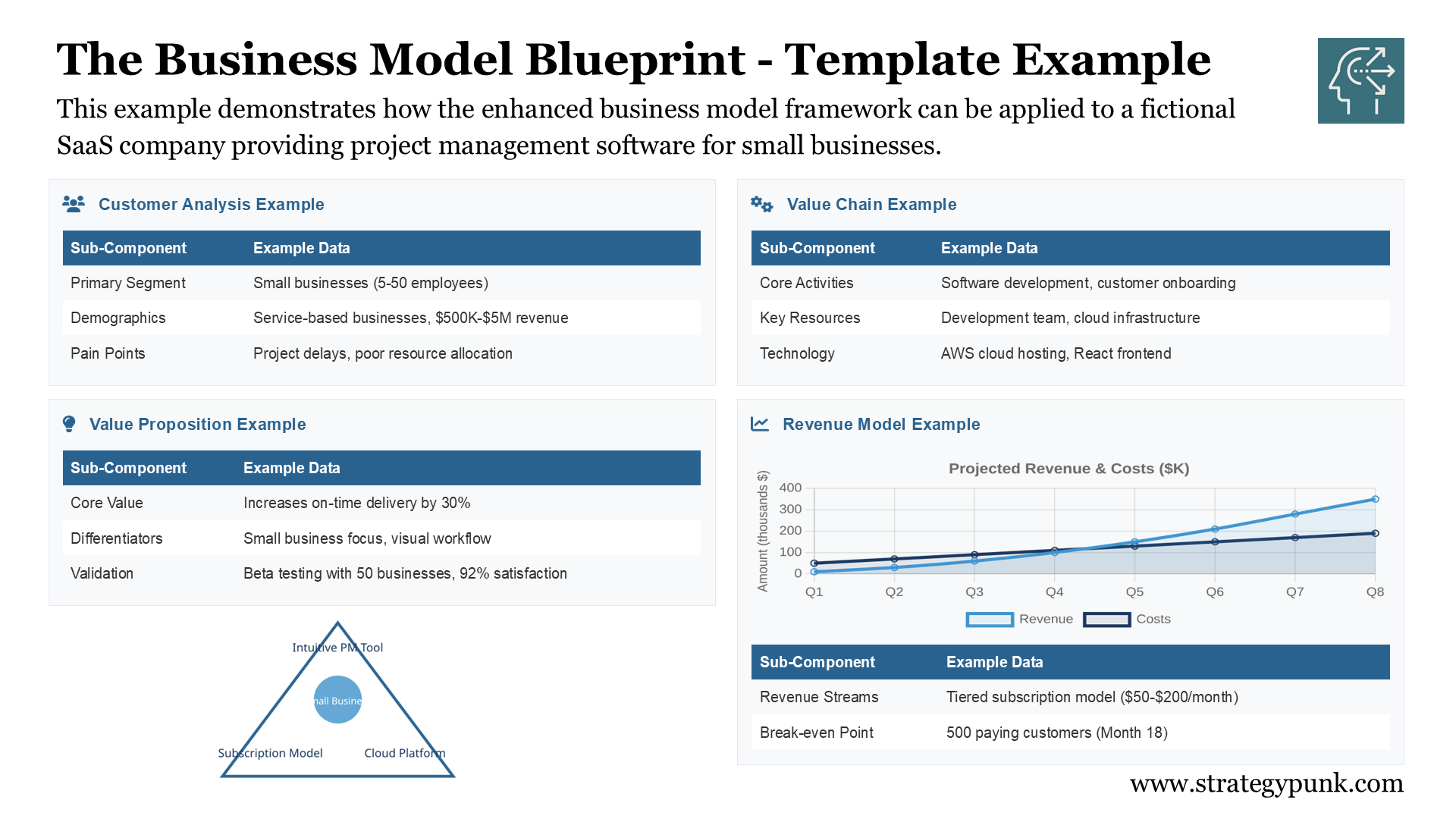
I tested this framework with a SaaS company building project management software for small businesses.
Here's what happened:
The customer analysis revealed that their assumed target market (tech startups) wasn't their actual best customer segment (service businesses). The value proposition testing showed that "easy to use" wasn't compelling - "increases on-time delivery by 30%" was.
The operational analysis identified critical resource gaps they hadn't considered. The financial modeling revealed their pricing strategy wouldn't support sustainable growth.
Result? They pivoted their entire go-to-market strategy before launching. Saved months of wasted effort and thousands in development costs.
Getting Started
The framework works best when you involve your entire team. Marketing brings customer insights. Operations contributes delivery expertise. Finance provides economic reality checks.
Start with the customer analysis worksheet. Conduct real customer interviews. Don't guess - validate. Then work through each component systematically.
The process takes effort upfront but saves massive time and money later. Better to invest 10 weeks in solid business model development than 10 months trying to fix a broken one.
The Bottom Line
Pretty triangles make great presentations. Systematic frameworks build successful businesses.
The Business Model Blueprint transforms business model development from art to science. It gives you structure when you need clarity, guidance when you're stuck, and validation when you're unsure.
Your business model is too important to leave to chance. Give it the systematic attention it deserves.
Ready to build your Business Model Blueprint? Download the complete framework and worksheets
Business Model Blueprint PDF Template
Download the fully editable PPT Template - please subscribe and log in; you can download the file direclty below.

